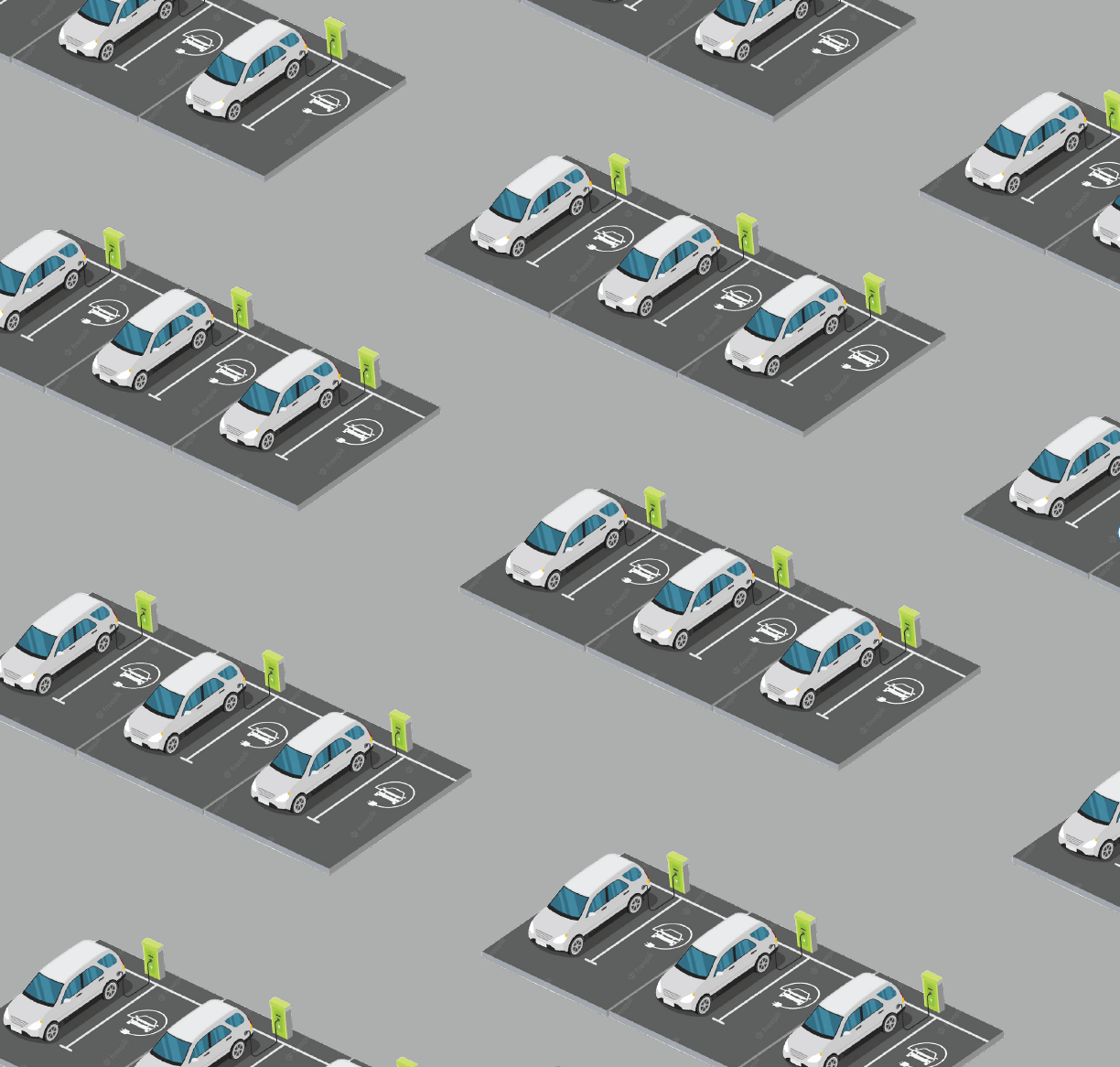
Electric vehicles (EVs) are the future of driving, but we’re still not ready for them. Today America’s roads and infrastructure are better suited to traditional fossil fuel-burning cars and trucks. In 2021, EVs accounted for less than two percent of new vehicle registrations in the US, according to PWC. Still, adoption is accelerating, and in order for the EV market share to increase, the obstacles to ownership—among them lack of public charging infrastructure, slow charging times, and the high cost of batteries—have to be addressed.
On the policy front, there is both will and funding—roughly $400 billion or so—to begin the work of decarbonizing American highways. The Infrastructure Investment & Jobs Act of 2021 and the Inflation Reduction Act of 2022 both prioritize EV charging solutions and, as a result, public and private investment will propel massive growth in this technology.
The time is right, then, to consider how this infrastructure will be built and what it will look like. Instead of asking, “How can we replicate the concept of gas stations for EVs?” ID students participating in the Spring 2023 Sustainable Solutions Workshop rephrased the question as “What can we electrify to meet the demand?” Their charge was to find a solution through open innovation practices and apply design methods to envision sustainable outcomes for EVs and the people who drive them.
Defining the Road Ahead
We know infrastructure when we see it—roads, bridges, ports, and power stations, to name a few. But when we view those assets through an economic lens, we can understand them as investable. Investable infrastructure is a structure that generates a cash flow—think toll roads and bridges, commercial shipping ports, or airports. But beyond the obvious, we also encounter farms, stadiums and, yes, electric vehicle charging stations.
Professor Carlos Teixeira charged students with prototyping solutions for EV charging through the lens of Capital Design—the idea that design can influence investment from public and private markets. He also tasked them with understanding the problem and prototyping the solution by using a Research through Design inquiry—an approach that embeds the research process in a design practice project with the explicit goal of generating knowledge (Isabel Prochner and Danny Godin, Design Studies, 2022). Their goal was to imagine new archetypes that anticipate the future and embrace complex issues at the intersection of multi-systems, stakeholders, levels, and intelligence.
Getting Up To Speed
To tackle the problems, students first assessed where we are today. Barriers abound, from lack of charging stations, challenges for non-Tesla EV owners finding compatible charging stations, and the trade-offs that come with universal adapters—namely that they charge at slower speeds. Speaking of charging times, EV charging can take anywhere from 30 minutes to 12 hours, and overnight charging can be limited if many drivers are using shared charging stations.
The desired future state, they posited, must include:
- Universal Charging Adaptivity, or the ability to support and accommodate different charging adapters, regardless of EV brand or model.
- Intelligent Optimization, which allows customers to communicate with their EVs and optimize the charging process based on factors such as battery capacity, energy demand, and charging rates.
- Net Metering, by which EV owners receive incentives to use renewable sources of energy and for supplying excess energy during peak demands.
- Autonomous Operation, including networking and communication capabilities to optimize charging.
- Bidirectional Energy Flow, a system so that EVs can either charge normally or supply energy back for credit or cash.
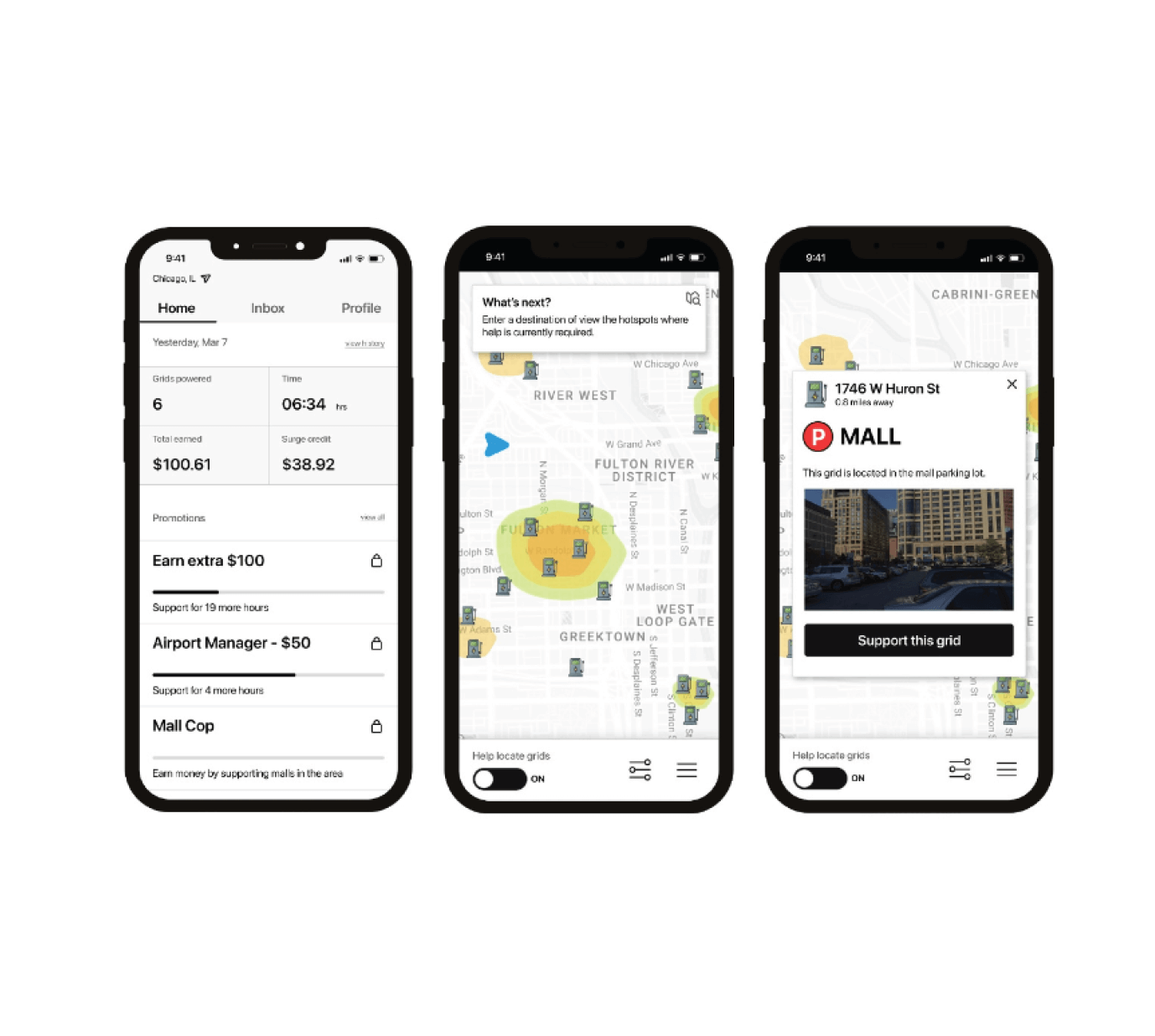
Hitting the Road: Archetype #1
The students’ rigorous research initially yielded 16 distinct prototypes—whittled to two presented in their final report—each embodying a unique archetype aimed at revolutionizing EV charging. Using diverse frameworks and tools, such as Asset Mapping and Anti-Oppressive Framework, the class viewed the archetypes through the critical lenses of sustainability, equity, and intelligence, and ensured that the designs were not only functional but also socially responsible.
The first challenge: to address the significant barriers to ubiquitous charging, among them the fact that many existing parking infrastructures may not allow for traditional fixed chargers or would be too costly to retrofit. Enter the student’s first archetype: Mobile charging services.
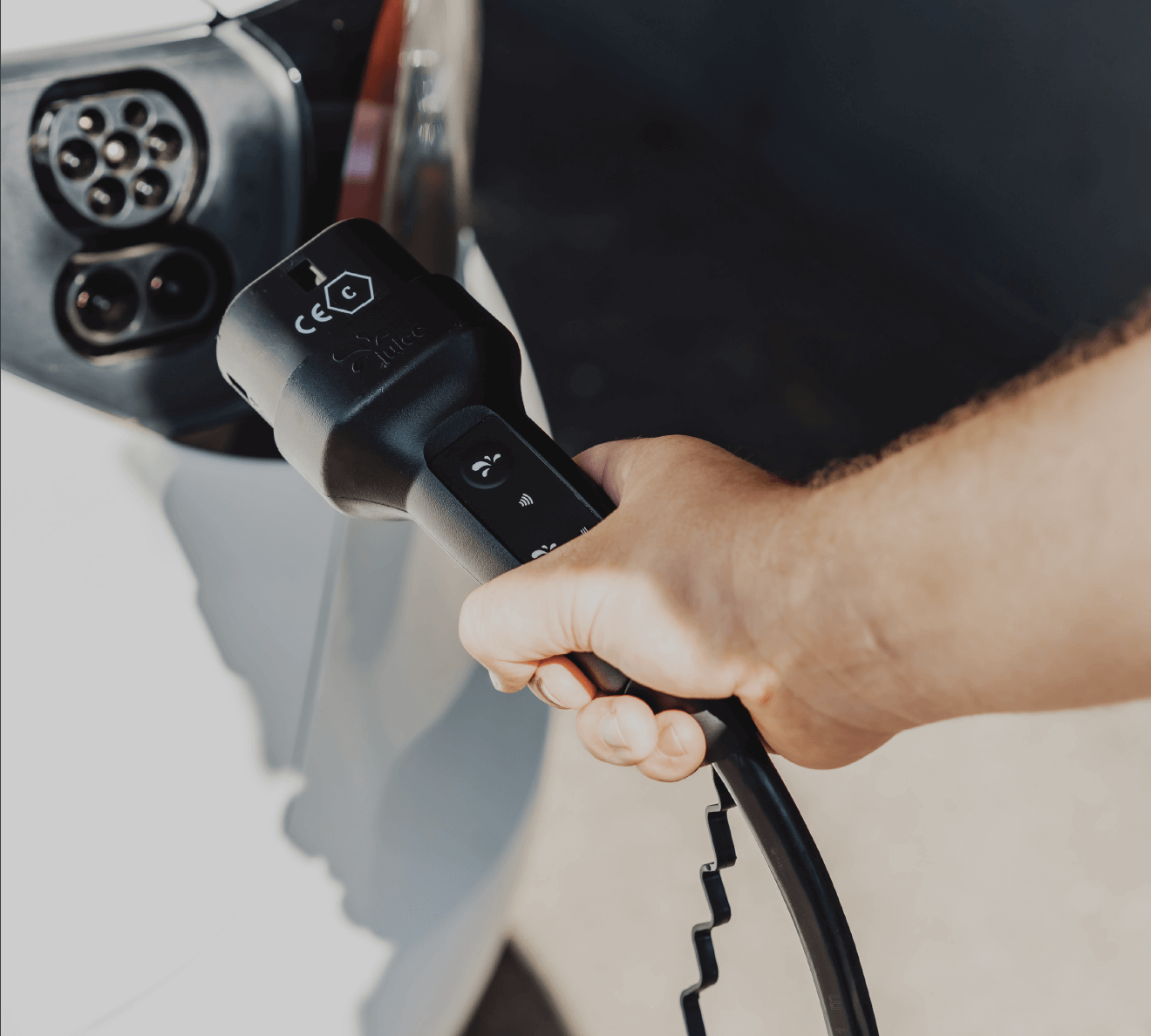
With autonomous functions that don’t require human intervention, these mobile charging stations would have networking and communication capabilities that allow customers to communicate with their EVs to optimize the charging process based on factors such as battery capacity, energy demand, and charging rates. Mobile charging stations would also have the ability to support and accommodate different charging adapters, regardless of EV brand or model.
One scenario the students imagined was a charging robot that could provide flexible charging in private spaces like parking lots or in public areas like city streets. The investible part of this investible infrastructure solution includes partnerships with building management organizations and managers of large parking garages who would see value in a recurring subscription model to bring autonomous charging robots to their existing facilities.

Fixed infrastructures like parking garages make natural partners for an autonomous mobile charging project like this. Benefits to the owners of parking garages include flexible deployment of charging in difficult situations as well as grid storage capability to utilities, in addition to offering a convenience benefit to consumers.
Another scenario is to use other vehicles as charging stations, such as long-haul semis that drivers can “hail” on long trips.
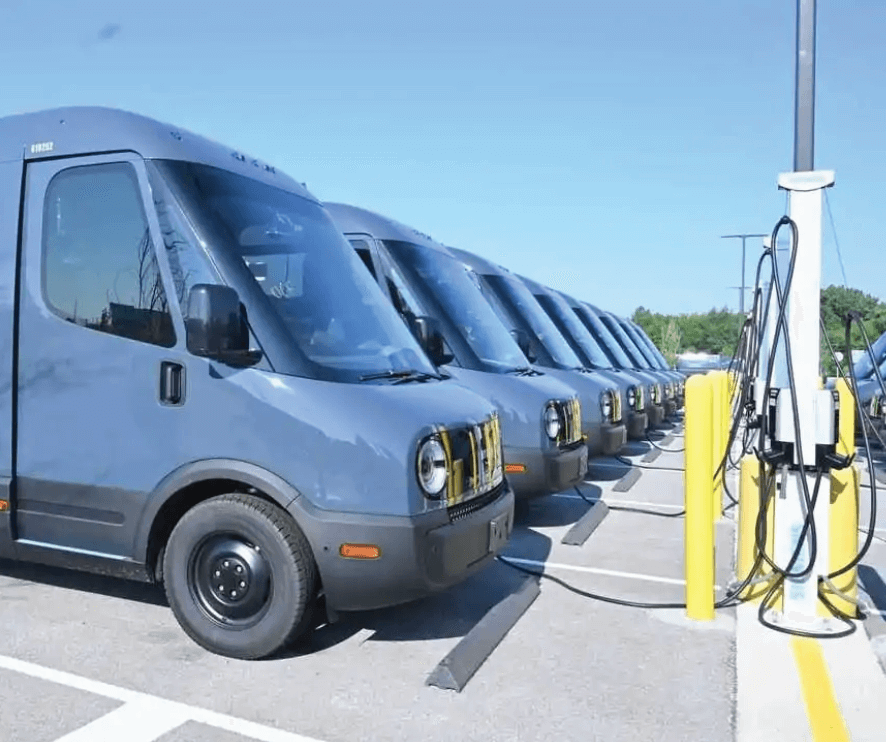
Giving Back to the Grid: Archetype #2
What if EV drivers could use their vehicles as a way to earn credit for supporting grid stability?
The answer to this question informed the second of the students’ archetypes. The feature of bidirectional charging, currently being implemented by various manufacturers, allows fleets of EVs connected to the grid to act as a unit of grid storage. In this model, owners would receive compensation for supplying back to the grid during high-demand periods—for example, by charging at home using renewable sources and selling back when they are connected to the grid later.
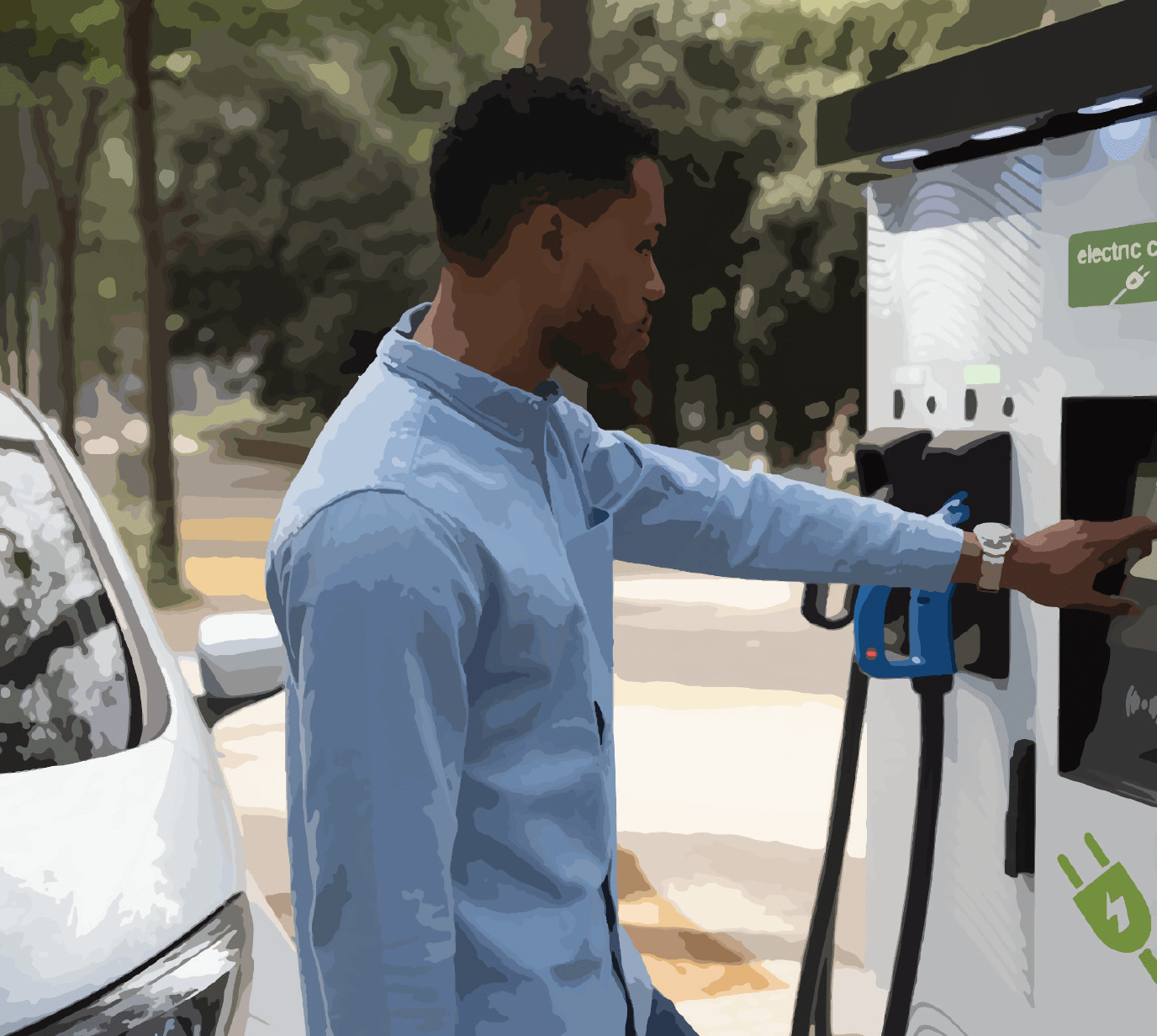
An energy exchange solution like this would feature bidirectional charging, which allows EV drivers to charge normally or to supply energy back using special chargers found at stations installed in collaboration with a local utility company. Incentives to use renewable sources of energy or supply excess energy during peak grid demand would facilitate energy exchange between a network of stakeholders. Finally, intelligent optimization could include an app or texting system that allows local utilities to alert drivers when there may be excess demand on the grid and offer incentives to connect their cars to increase the supply of energy—rather than siphon it off.

The investible aspects of this scenario include partnerships with businesses, garages, or airports that already have hundreds of parking spaces and would likely be installing many chargers in the near future. By adding bidirectional chargers and connections to the grid, they gain the additional function of balancing the grid and providing stability. This scenario offers long-term cash flow while supporting a new exchange of decarbonized energy.
Putting It Into Drive
Both archetypes the students developed could be implemented equitably and responsibly by accounting for different levels of income as well as location when determining rates for charging payments and credits. This approach to design—one that prioritizes values—is embedded in the concept of sustainable solutions.
Long-term capital investment is shaping our economy, society, and environment. By focusing on how capital is allocated and the decision-making processes that drive innovation, the students examined how strategic choice-making through design can influence and shape communities for the better. Making EV charging easy and omnipresent not only helps us move away from fossil fuels and fight climate change but also gets us closer to a cleaner, smarter, and more just world for everyone.
Sustainable Solutions Workshop: Designing for Investable Infrastructure
In Professor Carlos Teixeira’s Spring 2023 Sustainable Solutions Workshop, participants delved into the potential of EV charging and controlled environment agriculture from the lenses of sustainability, equity, intelligence, and investments.